We explore the life of Eva Perón, her career as an actress, and her role in politics. In addition, we discuss her main characteristics, and death.
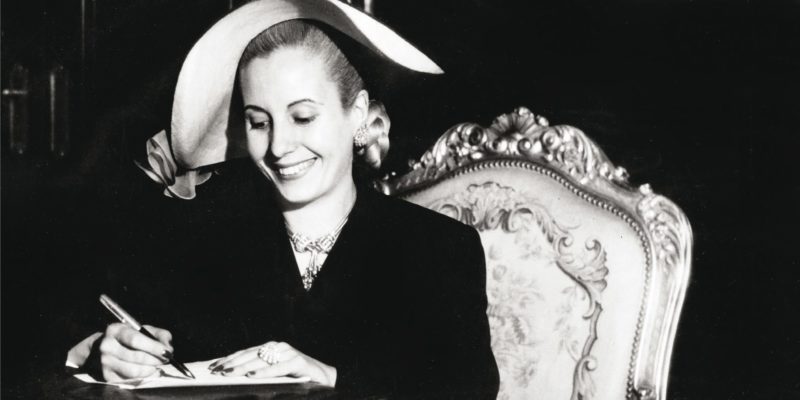
Who was Eva Perón?
María Eva Duarte, better known as Eva Perón or simply Evita, was an Argentine political leader and actress, the second wife of military figure and three-time president of the Argentine Republic, Juan Domingo Perón.
Due to her role as a political leader of the working-class masses and the Peronist Women's Party, Evita was recognized as the "Spiritual Leader of the Nation" in 1952, during her husband's first term in office. Today, she remains one of the most popular political and social icons of Argentina.
Numerous significant events of Argentine political history revolve around Evita, her political stature rivaling in popularity with that of Perón himself. Peronist followers have taken Argentina’s political leadership for over 50 years in various parties and fronts.
Eva Perón's name is synonymous with the help for the poor and dispossessed ("descamisados" in her own words, or "shirtless ones") and the informal organization of the grassroots, particularly of traditionally marginalized sectors.
Her remains rest in Recoleta Cemetery in Buenos Aires. Countless monuments, public institutions and streets honor her legacy.
- See also: Frida Kahlo
Birth of Eva Perón
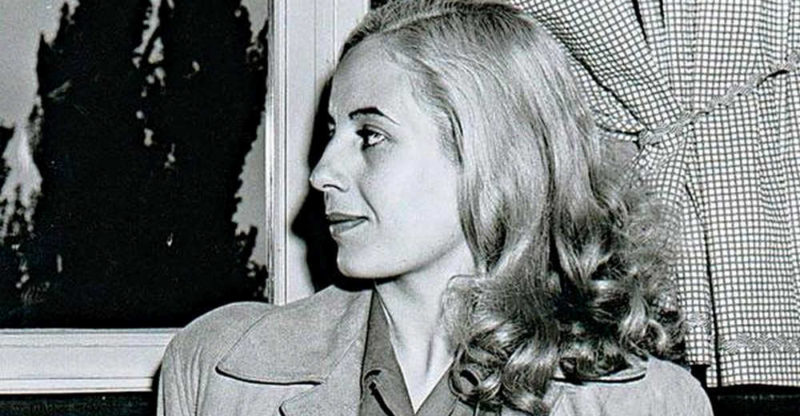
According to available records, María Eva Duarte was born on May 7, 1922.
However, later research has revealed that her true date of birth was May 7, 1919, as stated in her baptismal certificate.
Her place of birth is also unclear, and it remains uncertain whether she was born in the rural area of Los Toldos or in the town of Junín, both in Buenos Aires province.
This discrepancy regarding Evita’s dates and occurrences is due to the attempts to erase all traces of her by the Liberating Revolution (Revolución Libertadora), the dictatorial regime that succeeded Juan Domingo Perón in 1955.
What is certain is that Evita was the illegitimate daughter of Juan Duarte, a landowner and conservative politician from Chivilcoy, and Juana Ibarguren, of whom little is known, except that she was the head of the illegitimate family of "vasco" Duarte, as was customary during those times for powerful landowners.
Childhood and acting career of Eva Perón
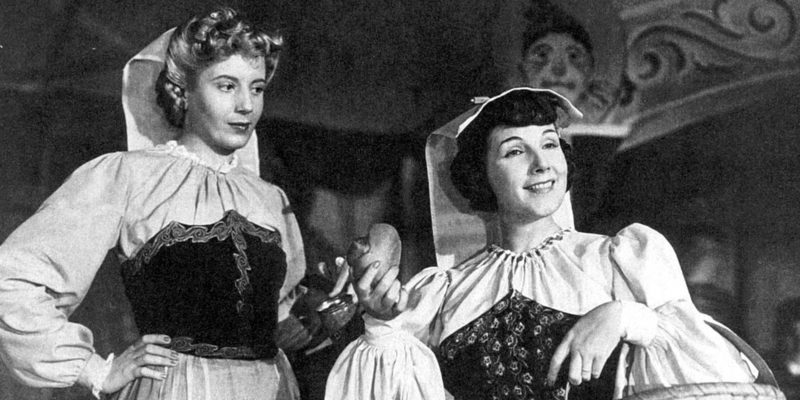
Eva was the youngest of five illegitimate children, and lived in the countryside until 1926, when the death of her father left them totally unprotected, forcing them to leave their home.
Her childhood was spent in Junín, from where Eva would leave for Buenos Aires when she was only 15 years old, pursuing a career as an actress.
Although these were times of sacrifices and hardships, Eva managed to gain some recognition, working as a second-line actress and model, but above all as a radio announcer and soap opera actress.
Her role in the radio extended beyond her role as an actress, since she was a founding member of the first Radio Syndicate, of which she became president in 1943.
Marriage to Juan Domingo Perón
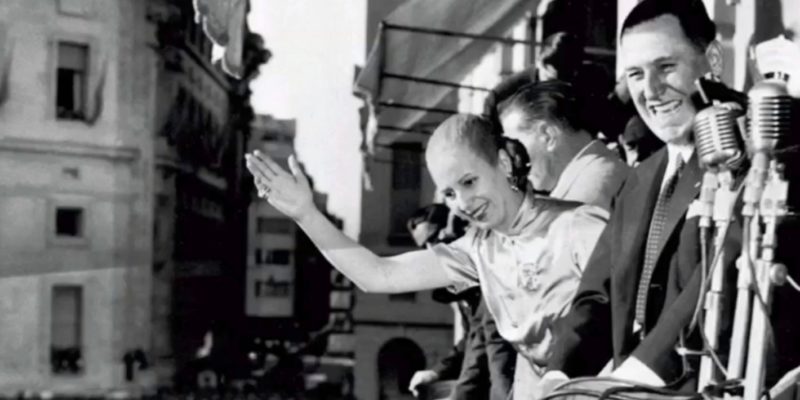
Eva and Juan Domingo Perón met in January 1944; she was 24 and he was 48. He had been a widower since 1938, and they quickly fell in love. In February that same year they were already living together in an apartment on Posadas Street, in Buenos Aires.
The following year they would face together the intense political conflict between Peronist and anti-Peronist forces, the former deeply consolidated in the labor unions.
On October 22 that year, they were married in a civil ceremony in the city of Junín, and on December 10, they had a Catholic ceremony at San Francisco Church in La Plata.
Political activity of Eva Perón
Eva managed to keep her public image separate from that of the "president's wife" during Perón's presidency, allowing herself to publicly voice her views on national and international politics, always in favor of the working classes and the underprivileged.
Her bond with the unions and workers was instrumental in shaping the Peronist party, in which the Labor Party, the Independent Party, and the Radical Civic Union Junta Renovadora were unified by Perón's mandate.
However, her most prominent role in the Peronist government was leading the Eva Perón Foundation (1948-1955), which was committed to social welfare and the fight against poverty.
This foundation came to replace the traditional Sociedad de Beneficencia, founded by Bernardino Rivadavia in the late 19th century and run by a group of high-society women.
The Eva Perón Foundation was dedicated to providing assistance and scholarships, building hospitals, schools, transit homes, summer camps, and numerous other works aimed at improving the quality of life of the less privileged classes.
The foundation also offered humanitarian aid to poor people in foreign countries, including the United States, Israel, Peru, Ecuador, and Colombia. Eva Perón herself participated in all of these activities.
Women's rights
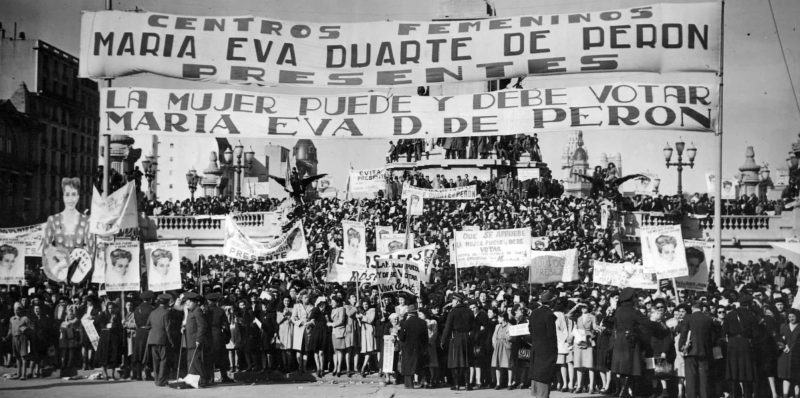
Eva became involved in politics as Perón’s companion during his 1946 presidential candidacy, which was a novelty considering the total absence of political rights for Argentinian women at that time.
Despite the efforts of feminists led by Alicia Moreau de Justo, Julieta Lanteri, and Elvira Rawson de Dellepiane, women were not expected to have political opinions.
Three days after the 1946 Peronist victory, Eva delivered her first public speech at the age of twenty-six. It was a public ceremony to thank the Peronist women for their support, but she seized the opportunity to demand equal rights between women and men and women's suffrage.
That marked the beginning of her feminist activism, whose first major victory in 1947 was the passing of Law 13.010 on women's suffrage in Argentina. By 1950, no other American country would have as many women in Congress as Argentina.
In 1949, Evita became the president of the Peronist Women's Party (Partido Peronista Femenino), an autonomous entity within the Peronist movement. Thanks to its efforts, legal equality in marriage and parental rights were achieved as part of the Constitutional Reform of 1949.
Achievements of Eva Perón
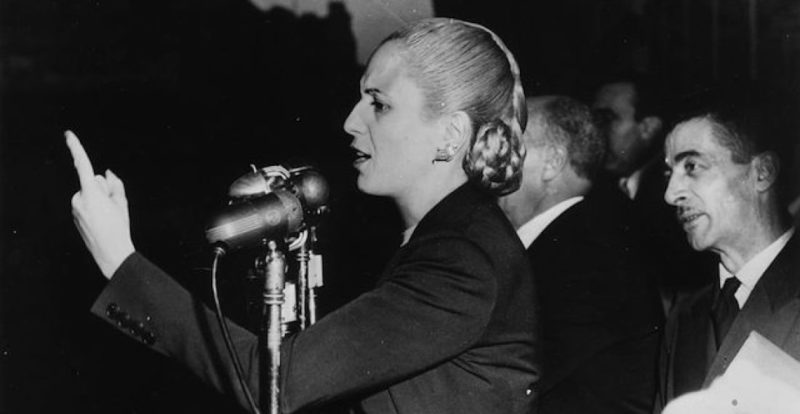
Evita's achievements in social matters are numerous. Among them are the recognition of political and legal rights for women, including women's suffrage and parental rights, as well as the right to be elected to public positions.
She also championed the rights of the elderly, contained in her Decalogue for the rights of the Elderly (Decálogo de los derechos de la Ancianidad), proposed to the UN in 1948.
Eva published two books during her lifetime: La razón de mi vida (1951) and Mi mensaje (1952).
Honors and titles of Eva Perón
Evita received a great number of decorations both in Argentina and abroad, among which the following stand out:
- Grand Cross of the Order of Isabella the Catholic (Spain, 1947)
- Grand Cross of Honor of the Argentine Red Cross (1951)
- Collar of the Order of the Liberator General San Martin (1952)
- Grand Cross of the Order of the Aztec Eagle (Mexico)
- Grand Cross of the Order of Merit (Ecuador)
- Grand Cross Extraordinary of the Order of Boyacá (Colombia)
Death of Eva Perón
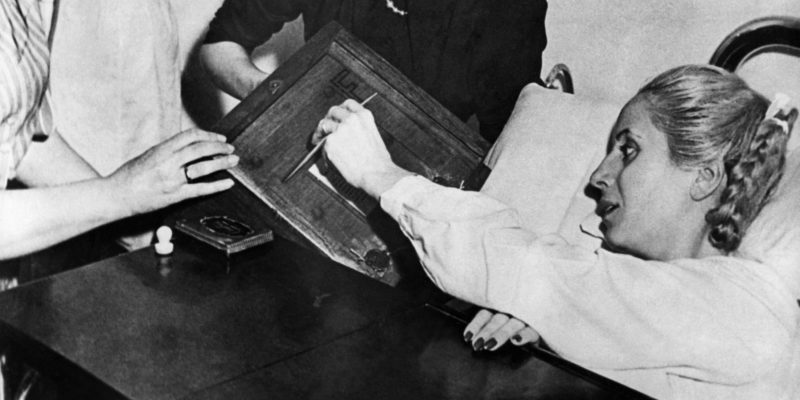
Evita became ill with cervical cancer in the late 1940s, and by 1950 she had already lost twenty-two pounds.
Despite being under treatment, she cast her first and only vote from her hospital bed during the 1951 elections. On July 26, 1952, at the age of 33, she died after nearly a week in a coma.
Her body was embalmed and displayed at the General Confederation of Labor (Confederación General del Trabajo - CGT).
Exhumation and kidnapping of Eva Perón’s corpse
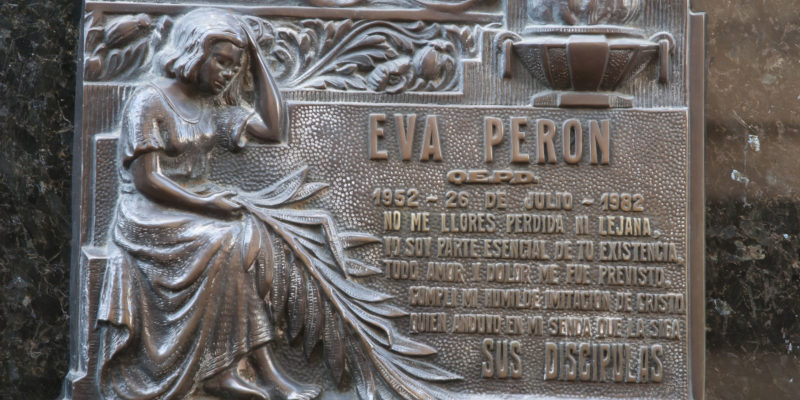
Eva’s corpse was kidnapped from the CGT premises during the self-proclaimed dictatorial regime Liberating Revolution (Revolución Libertadora, 1955-1958), which overthrew Perón through a military coup d'état and suspended the Argentine Constitution, nullifying all Peronist achievements.
The body was hidden and eventually buried clandestinely.
For 15 years, the whereabouts of her remains were unknown. In 1971, General Lanusse ordered that the body be returned to General Perón, who was in exile in Madrid. The corpse was then recovered from a grave in Milan, Italy. A finger was missing and the body had marks of blows to the face.
Finally, in 1974 during the government of Perón's third wife, María Estela Martínez, the body was returned to Argentina and placed in the Residential Residence (Quinta Presidencial de Olivos). It was subsequently handed over to the Duarte family in 1976, during the so-called National Reorganization Process (Proceso de Reorganización Nacional).
Eva Perón quotes
- "There is nothing stronger than the people. All that is needed is to stir it up to be just, free and sovereign."
- "Where there is a need, a right is born."
- "The time has come for women who share a public cause, and the time has passed for women as an inert and numerical value within society."
- "A woman’s movement would be worthless in a world without social justice."
References
- “Eva Perón” en Wikipedia.
- “Evita” en la sección turismo de Buenos Aires Ciudad.
- “Eva Perón [Evita Perón]” en Biografías y Vidas.
- “Reseña histórica de la vida de Evita” en Museo Evita.
- “Eva Perón (Argentine political figure and actress)” en The Enciclopaedia Britannica.
- “The 20-year odissey of Eva Peron’s body” en BBC News.
- “Eva Perón, el último año con su pueblo” (Video) en TVPública Argentina.
Explore next:
Was this information useful to you?
Yes NoThank you for visiting us :)